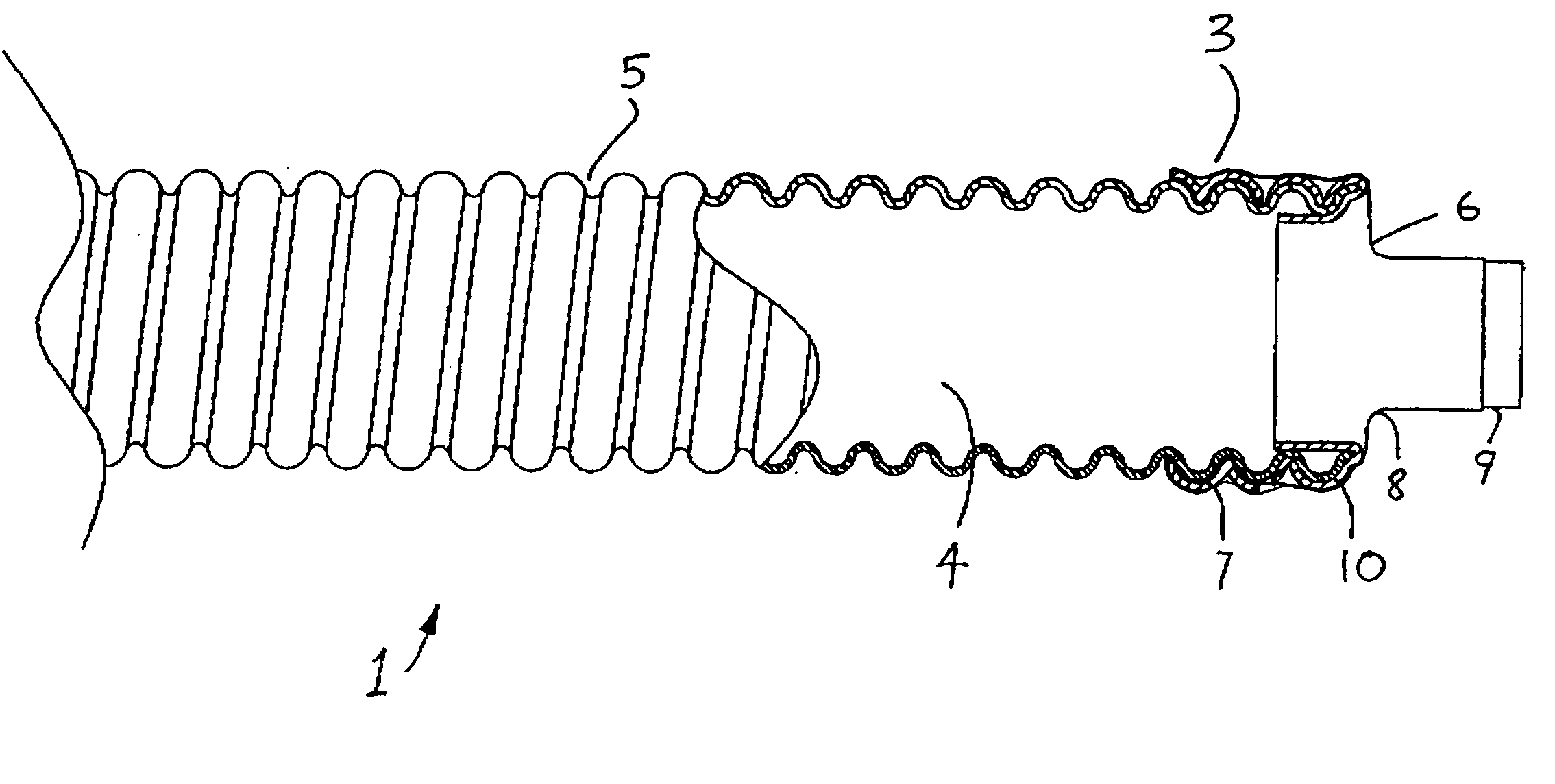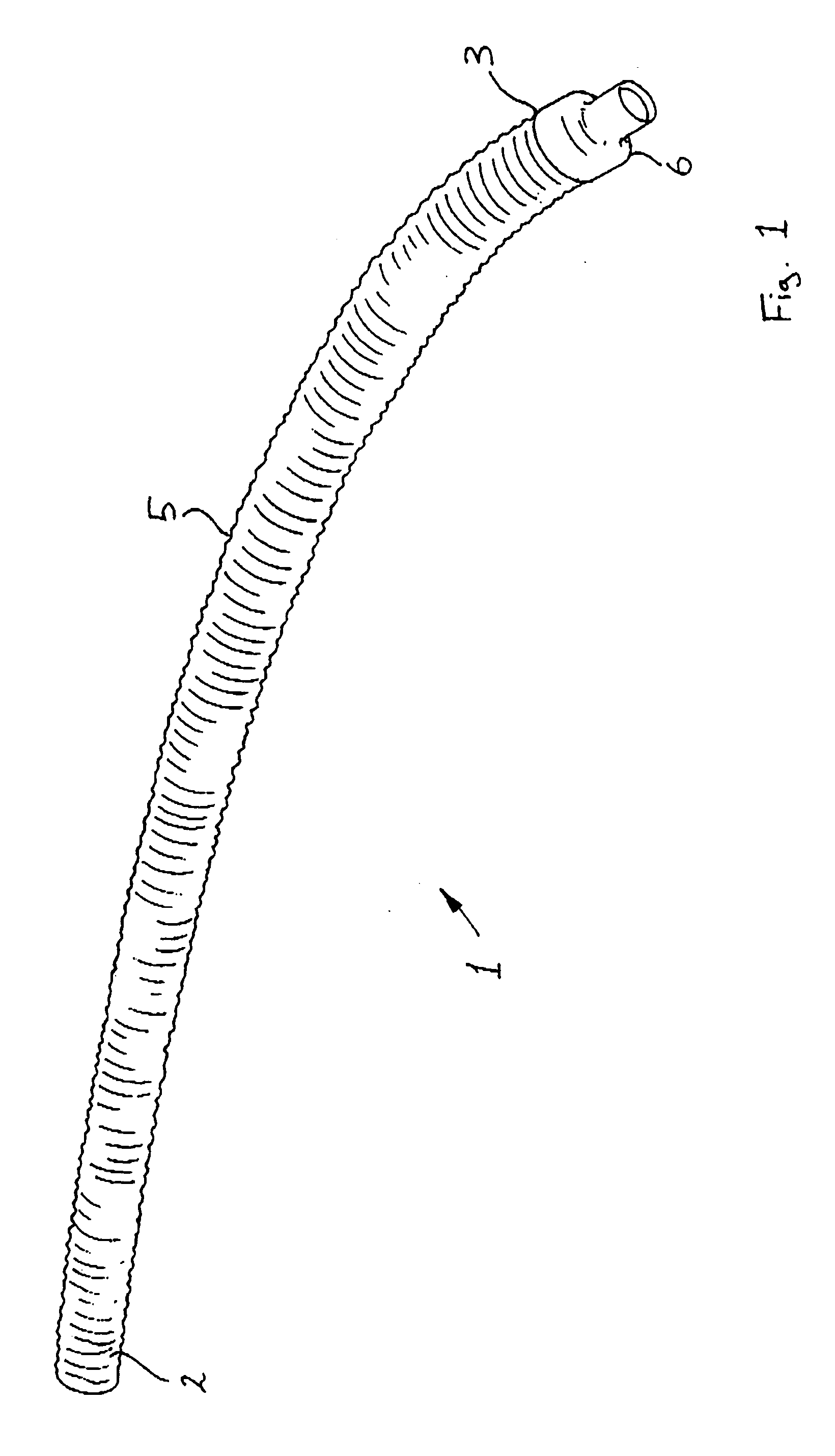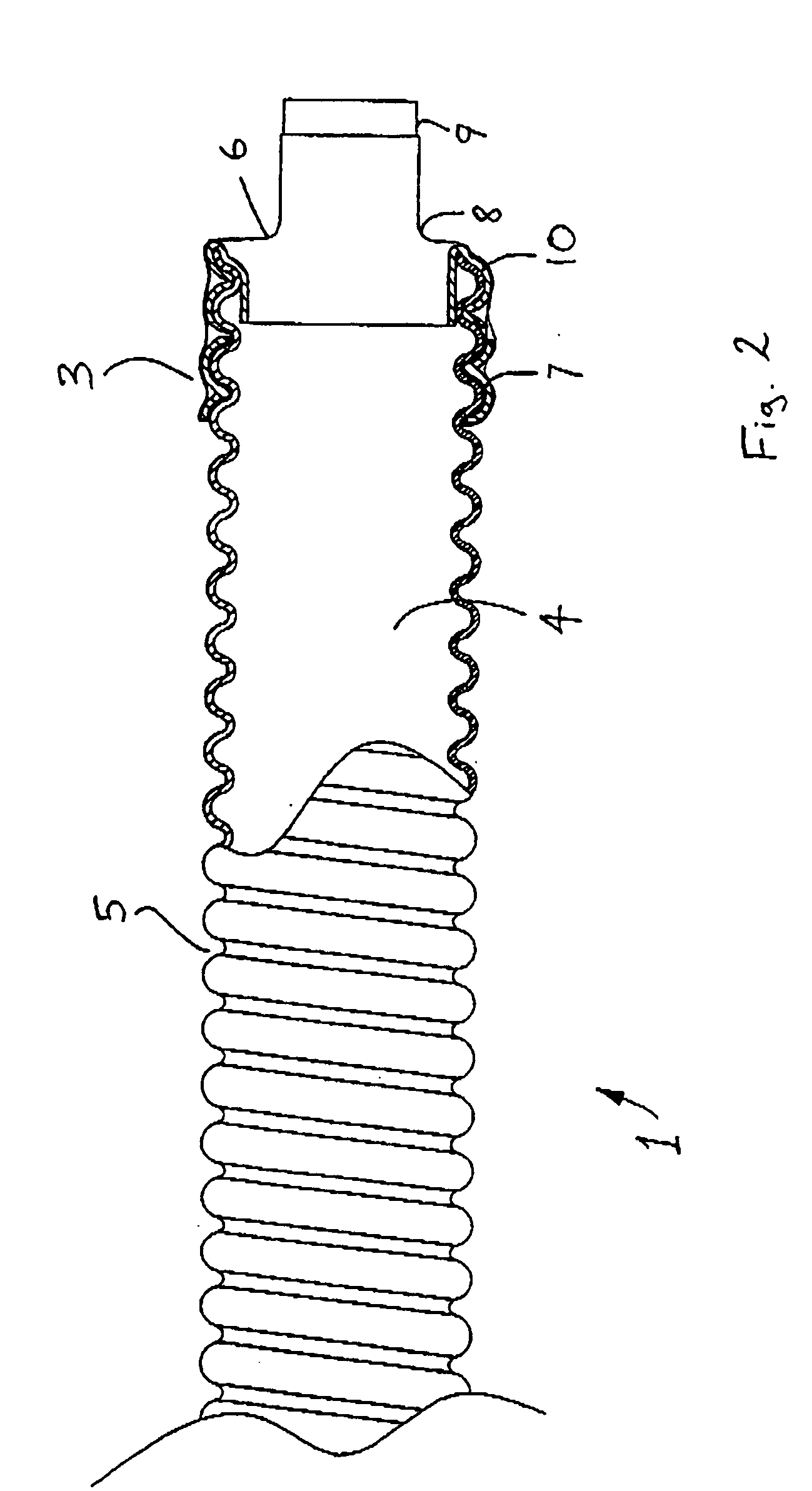Colonic overtube
a technology of overtubes and overtubes, which is applied in the field of overtubes, can solve the problems of difficult cannulation of large intestines with colonoscopes, difficult to achieve the more realistic anatomies of actual people, and long sigmoid colons, etc., and achieve the effect of substantially facilitating the flexing of overtubes
- Summary
- Abstract
- Description
- Claims
- Application Information
AI Technical Summary
Benefits of technology
Problems solved by technology
Method used
Image
Examples
Embodiment Construction
[0085] Referring to the drawings and initially to FIGS. 1 to 17 thereof, there is illustrated a colonic overtube 1 according to the invention for maintaining a section of a colon, in this case especially a sigmoid colon in a straightened configuration. The overtube 1 has a proximal end 2 for location, in use, externally of a colon, and a distal end 3 for insertion into a colon. A typical length for the overtube 1 is 0.5 m.
[0086] A colonoscope lumen 4 extends through the overtube 1 to facilitate passing the overtube 1 over a colonoscope. At least portion of the overtube 1 is laterally flexible. In this manner the overtube 1 may flex substantially without kinking during advancement of the overtube 1 through a colon. In this case and as illustrated in FIGS. 1 and 2, the overtube 1 defines a corrugation 5 which is convoluted, the corrugation 5 extending along the entire length of the overtube 1 from the proximal end 2 to the distal end 3. The corrugated configuration of the overtube 1 ...
PUM
 Login to View More
Login to View More Abstract
Description
Claims
Application Information
 Login to View More
Login to View More - R&D
- Intellectual Property
- Life Sciences
- Materials
- Tech Scout
- Unparalleled Data Quality
- Higher Quality Content
- 60% Fewer Hallucinations
Browse by: Latest US Patents, China's latest patents, Technical Efficacy Thesaurus, Application Domain, Technology Topic, Popular Technical Reports.
© 2025 PatSnap. All rights reserved.Legal|Privacy policy|Modern Slavery Act Transparency Statement|Sitemap|About US| Contact US: help@patsnap.com



